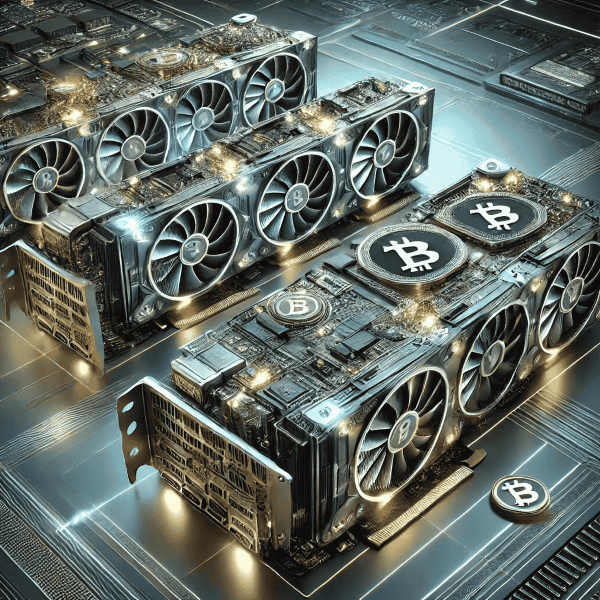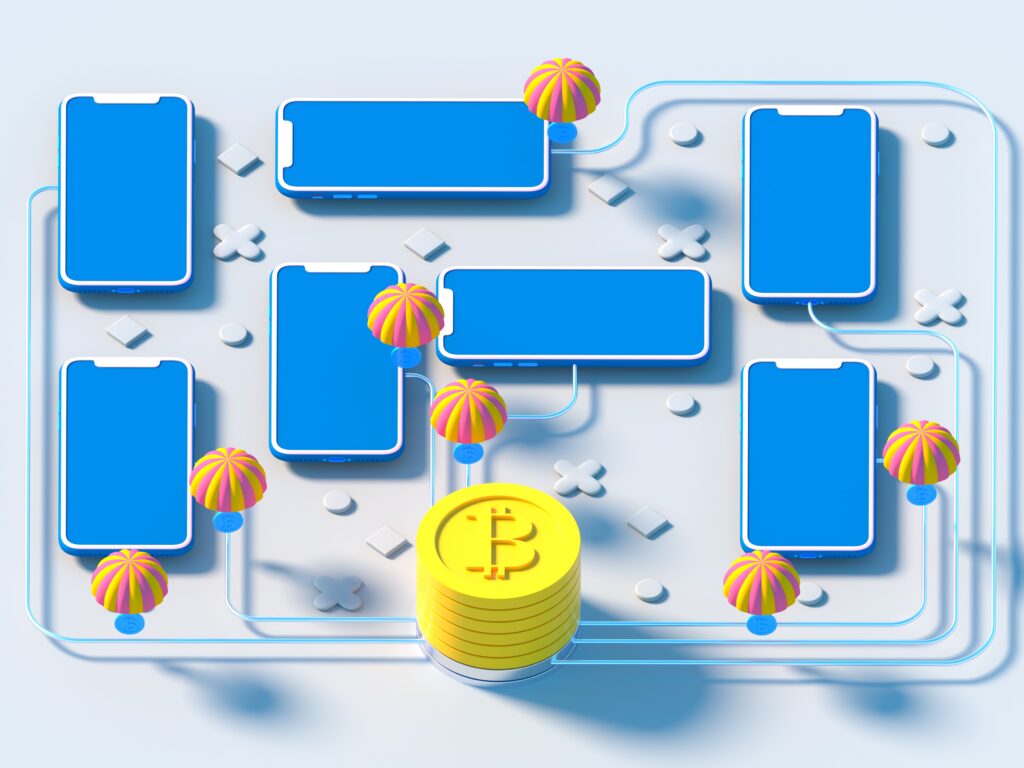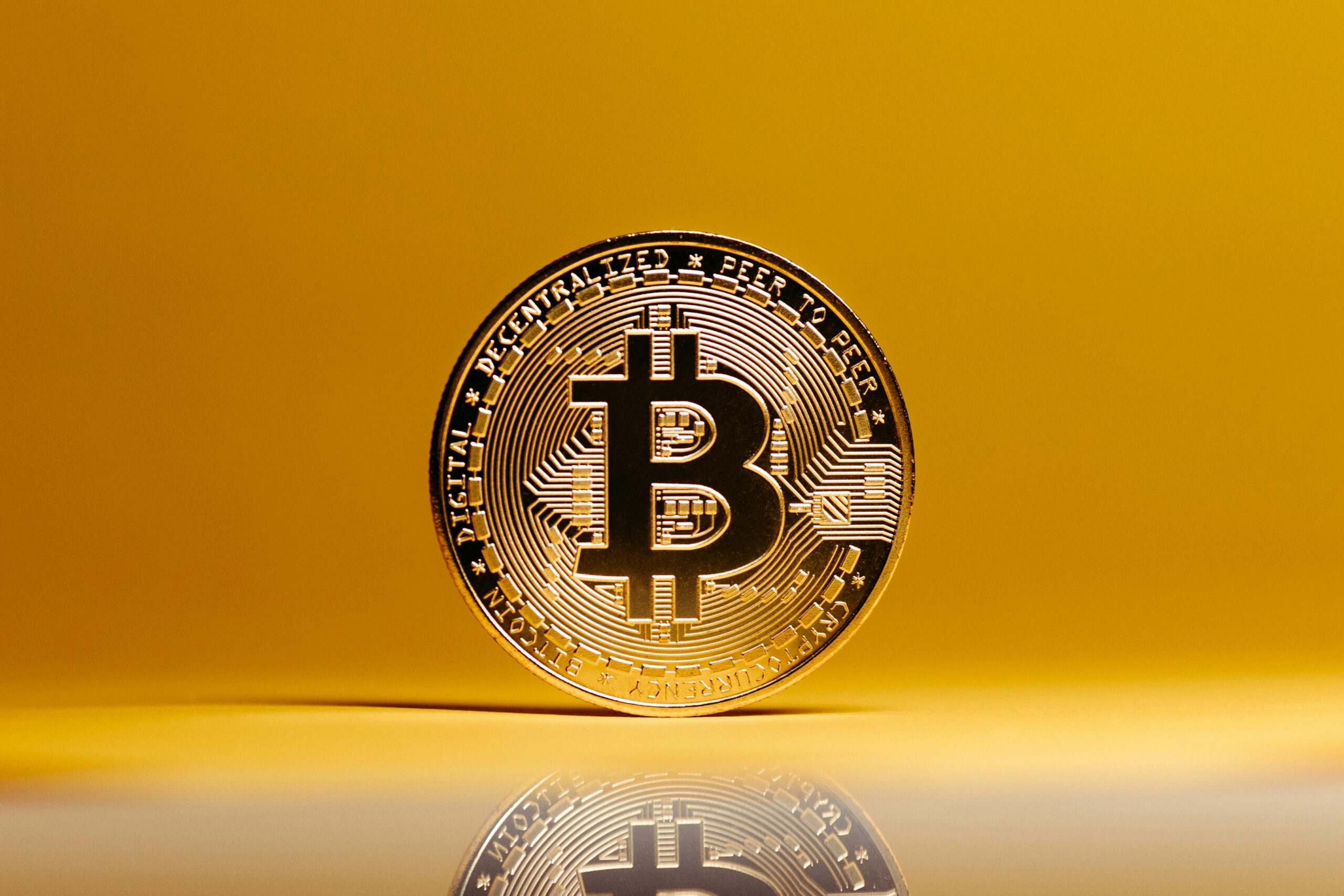As the world becomes increasingly digital, the demand for cryptocurrencies continues to surge. At the forefront of this revolution is Bitcoin, the pioneering cryptocurrency that has taken the financial world by storm. But what powers the creation of new Bitcoins? Enter Bitcoin mining cards, the unsung heroes of the crypto mining industry.
In this article, we delve into the fascinating world of Bitcoin mining cards and explore their immense power in shaping the future of cryptocurrency mining. These specialized graphics processing units (GPUs) are designed to perform complex calculations necessary for mining Bitcoins. And with Bitcoin’s value skyrocketing, the competition to mine this lucrative cryptocurrency has never been fiercer.
Join us as we uncover the inner workings of Bitcoin mining cards, their unparalleled efficiency, and their potential to revolutionize the world of cryptocurrency mining. We’ll also examine the challenges faced by miners, the environmental impact of mining, and the future outlook for this fascinating industry.
Whether you’re a seasoned crypto miner or simply curious about the intricacies of Bitcoin, this article is your ultimate guide to unraveling the untapped power of Bitcoin mining cards. Get ready to uncover the secrets that lie beneath the surface of the world’s most popular cryptocurrency.
What are Bitcoin mining cards?

Bitcoin mining is the process of verifying and adding new transactions to the Bitcoin blockchain. This process is essential for maintaining the integrity and security of the Bitcoin network. At the heart of this process are specialized computer components called Bitcoin mining cards, also known as cryptocurrency mining cards or ASIC miners.
Bitcoin mining cards are designed specifically for the computationally intensive task of mining Bitcoins. These cards are equipped with powerful application-specific integrated circuits (ASICs) that are optimized for the complex mathematical calculations required to solve the cryptographic puzzles necessary for mining new Bitcoins. Unlike traditional computer graphics cards, which are designed for a wide range of tasks, Bitcoin mining cards are laser-focused on the specific needs of cryptocurrency mining.
The specialized nature of Bitcoin mining cards allows them to perform these calculations much more efficiently than general-purpose CPUs or GPUs. This efficiency translates into higher mining speeds, lower power consumption, and ultimately, a greater chance of successfully mining new Bitcoins. As the competition in the Bitcoin mining industry has intensified, the demand for these high-performance mining cards has skyrocketed, driving innovation and advancements in the field.
Advantages of using Bitcoin mining cards
One of the primary advantages of using Bitcoin mining cards is their unparalleled efficiency in the mining process. These specialized cards are designed to perform the complex mathematical calculations required for mining Bitcoins at a much faster rate than traditional computer components. This increased efficiency results in a higher hash rate, which is the measure of a mining rig’s computational power.
Another key advantage of Bitcoin mining cards is their energy efficiency. Compared to CPU or GPU-based mining rigs, Bitcoin mining cards consume significantly less power while delivering the same or even higher mining performance. This reduced power consumption not only lowers the operating costs for miners but also has a positive impact on the environment, as it reduces the carbon footprint associated with cryptocurrency mining.
Moreover, Bitcoin mining cards are specifically engineered to withstand the intense workload and heat generated during the mining process. These cards are built with robust cooling systems and advanced heat dissipation technologies, ensuring reliable and continuous operation even in demanding mining environments. This durability and reliability are crucial for miners who rely on their mining rigs to generate a steady stream of cryptocurrency rewards.
In addition to their technical advantages, Bitcoin mining cards also offer economic benefits for miners. As the competition in the Bitcoin mining industry intensifies, the ability to mine more efficiently and cost-effectively becomes a significant competitive advantage. By utilizing Bitcoin mining cards, miners can increase their chances of successfully mining new Bitcoins, leading to higher earnings and a better return on their investment.
The future of cryptocurrency mining

The future of cryptocurrency mining, particularly in the context of Bitcoin, is poised to undergo a transformative shift. As the demand for cryptocurrencies continues to grow, the competition among miners to secure new Bitcoins will only intensify. This competitive landscape will drive the ongoing development and advancement of Bitcoin mining cards, as miners seek to gain an edge over their rivals.
One of the key trends shaping the future of cryptocurrency mining is the increasing emphasis on energy efficiency and sustainability. As concerns over the environmental impact of Bitcoin mining continue to mount, there will be a growing demand for mining solutions that minimize energy consumption and carbon footprint. Bitcoin mining cards, with their superior energy efficiency, will play a crucial role in addressing these concerns and positioning the industry for a more eco-friendly future.
Moreover, the future of cryptocurrency mining will likely see the emergence of new and innovative mining technologies that build upon the foundations laid by Bitcoin mining cards. This could include the development of even more specialized and powerful ASIC chips, as well as the integration of cutting-edge cooling systems and power management solutions to further enhance the efficiency and performance of mining rigs.
Alongside these technological advancements, the future of cryptocurrency mining will also be shaped by regulatory changes and evolving market dynamics. As governments and policymakers continue to grapple with the implications of cryptocurrencies, the legal and regulatory landscape surrounding mining activities may undergo significant shifts. Miners will need to adapt to these changes, and Bitcoin mining cards will need to evolve accordingly to ensure compliance and maintain their competitive edge.
Factors to consider when choosing a Bitcoin mining card
When selecting a Bitcoin mining card, there are several key factors that miners should consider to ensure they make an informed and strategic decision. These factors can have a significant impact on the overall efficiency, profitability, and longevity of a mining operation.
One of the primary factors to consider is the hash rate of the Bitcoin mining card. The hash rate, measured in hashes per second (H/s), represents the card’s computational power and its ability to solve the cryptographic puzzles required for mining. A higher hash rate generally translates to a greater likelihood of successfully mining new Bitcoins, making it a crucial metric for miners to evaluate.
Another important factor is the energy efficiency of the Bitcoin mining card, as measured by its power consumption and energy efficiency ratio (EER). Miners should seek out cards with low power consumption and high EER, as these characteristics can significantly reduce operating costs and increase profitability in the long run.
The reliability and durability of the Bitcoin mining card are also essential considerations. Mining rigs often operate 24/7 under intense workloads, so miners need to ensure that their chosen cards can withstand these demanding conditions without experiencing frequent failures or breakdowns. Reputable brands with a track record of quality and customer support are often the best choices in this regard.
How to set up and use a Bitcoin mining card
Setting up and using a Bitcoin mining card can be a straightforward process, but it does require some technical knowledge and attention to detail. Here’s a step-by-step guide to help you get started:
1➜Acquire a compatible Bitcoin mining card:Research and select a high-performance Bitcoin mining card that fits your budget and mining requirements. Ensure that the card is compatible with your computer’s hardware and software.
2➜Assemble the mining rig: Install the Bitcoin mining card into your computer or a dedicated mining rig. Ensure that the card is securely connected and that the system has adequate cooling and power supply.
3➜ Install the necessary software: Download and install the appropriate mining software for your Bitcoin mining card. Popular options include mining pools, such as AntPool or F2Pool, which provide a user-friendly interface and streamline the mining process.
4➜ Configure the mining software: Set up the mining software by entering your wallet address, pool details, and any other necessary configurations. Ensure that the settings are optimized for your specific Bitcoin mining card and mining environment.
5➜ Start mining: Once the setup is complete, you can begin the mining process. The mining software will automatically start solving the cryptographic puzzles and contributing your card’s computational power to the Bitcoin network.
6➜ Monitor and optimize: Regularly monitor your mining rig’s performance, including hash rates, power consumption, and temperature. Adjust settings or troubleshoot any issues that may arise to ensure maximum efficiency and profitability.
7➜Secure your earnings: Regularly transfer your mined Bitcoins to a secure digital wallet to protect your earnings from potential theft or loss.
Common challenges and solutions in Bitcoin mining
While Bitcoin mining can be a lucrative endeavor, it also comes with its fair share of challenges that miners must navigate. Understanding these challenges and having effective solutions in place can make the difference between a successful mining operation and a frustrating one.
One of the primary challenges in Bitcoin mining is the intense competition among miners. As more individuals and organizations join the mining race, the difficulty of solving the cryptographic puzzles required to mine new Bitcoins increases. This increased difficulty can lead to lower mining rewards and reduced profitability for individual miners.
To address this challenge, miners often turn to mining pools, where they combine their computational power with that of other miners to increase their chances of successfully mining new Bitcoins. By pooling resources, miners can receive more consistent and predictable rewards, even if their individual contribution to the mining process is smaller.
Another significant challenge in Bitcoin mining is the high energy consumption and associated costs. The energy-intensive nature of the mining process can result in substantial electricity bills, which can eat into the profits earned from mining. To mitigate this challenge, miners often seek out locations with access to cheap and renewable energy sources, such as hydroelectric or solar power, to reduce their operational costs.
Additionally, the rapid technological advancements in Bitcoin mining hardware can pose a challenge for miners. As newer and more powerful mining cards are introduced, older and less efficient models become quickly obsolete, requiring miners to constantly upgrade their equipment to maintain a competitive edge.
To address this challenge, miners can adopt a strategic approach to equipment upgrades, carefully considering the cost-benefit analysis of investing in new hardware. They may also explore options for reselling or repurposing their older mining cards to recoup some of their investment.
Comparison of different Bitcoin mining cards on the market
The Bitcoin mining card market is a rapidly evolving landscape, with a wide range of options available to miners. Each card offers its own unique set of features, performance characteristics, and price points, making it essential for miners to carefully evaluate and compare their options.
One of the leading Bitcoin mining cards on the market is the Antminer S19 Pro, developed by Bitmain, a prominent player in the cryptocurrency mining industry. The Antminer S19 Pro boasts a hash rate of up to 110 TH/s (terahashes per second) and an impressive energy efficiency ratio of 29.5 J/TH, making it a highly sought-after choice among miners.
Another popular option is the AvalonMiner 1246, produced by Canaan, another major player in the Bitcoin mining hardware market. This card offers a hash rate of up to 90 TH/s and an energy efficiency ratio of 38 J/TH, providing a solid balance of performance and power efficiency.
For miners seeking a more budget-friendly option, the Innosilicon T2 Turbo may be an attractive choice. While its hash rate of up to 55 TH/s is lower than the top-tier models, its energy efficiency ratio of 45 J/TH and relatively lower price point make it a viable option for miners with tighter budgets.
It’s important to note that the performance and energy efficiency of Bitcoin mining cards can vary significantly based on factors such as the mining algorithm, environmental conditions, and the specific configuration of the mining rig. Miners should carefully research and compare the technical specifications, power consumption, and cost-effectiveness of different Bitcoin mining cards to identify the best fit for their mining operations.
Alternative cryptocurrency mining methods

While Bitcoin mining cards have become the dominant force in the cryptocurrency mining industry, there are alternative mining methods that have gained traction in recent years. These alternative approaches offer miners different advantages and may be more suitable for specific circumstances or preferences.
One such alternative is GPU mining, which utilizes high-performance graphics processing units (GPUs) instead of specialized ASIC-based mining cards. GPU mining is particularly popular for mining alternative cryptocurrencies, known as altcoins, that are designed to be resistant to ASIC-based mining. This approach can provide more flexibility and a broader range of mining options for miners, but it may not be as efficient as ASIC-based mining for mining Bitcoins specifically.
Another alternative is cloud mining, where miners can rent computing power from a third-party provider instead of investing in their own mining hardware. This approach can be attractive for those who want to participate in cryptocurrency mining without the hassle of setting up and maintaining their own mining rigs. However, cloud mining often comes with higher operating costs and may not offer the same level of control and customization as owning and operating one’s own mining equipment.
Lastly, some miners have explored the potential of using renewable energy sources, such as solar or wind power, to power their mining operations. This approach not only reduces the environmental impact of mining but also provides a more stable and cost-effective energy source in the long run. However, the upfront investment required for setting up renewable energy infrastructure can be a significant barrier for some miners.
While these alternative mining methods may not match the raw power and efficiency of Bitcoin mining cards, they offer miners additional options to consider based on their specific needs, resources, and preferences. As the cryptocurrency mining landscape continues to evolve, we may see further diversification and innovation in the ways miners approach the challenge of securing new digital assets.
Conclusion
Bitcoin mining cards have emerged as the unsung heroes of the cryptocurrency mining industry, powering the creation of new Bitcoins and shaping the future of this rapidly evolving digital landscape. These specialized graphics processing units (GPUs) have proven to be instrumental in the ongoing success and growth of the Bitcoin network, offering unparalleled efficiency, reliability, and cost-effectiveness for miners.
As the demand for cryptocurrencies continues to surge, the competition among miners to secure new Bitcoins has intensified. Bitcoin mining cards have played a crucial role in this competitive landscape, providing miners with the tools they need to stay ahead of the curve and maximize their chances of successfully mining new Bitcoins.
Looking to the future, the potential of Bitcoin mining cards is poised to expand even further. Advancements in ASIC chip technology, cooling systems, and power management solutions will likely lead to even more powerful and energy-efficient mining cards, catering to the growing needs of the cryptocurrency mining industry. Additionally, the increasing focus on sustainability and environmental impact will drive the development of mining solutions that minimize energy consumption and carbon footprint, further solidifying the role of Bitcoin mining cards as the cornerstone of a more eco-friendly cryptocurrency ecosystem.
As the world continues to embrace the transformative power of cryptocurrencies, the unsung heroes of Bitcoin mining cards will remain at the forefront of this revolution, unlocking new possibilities and shaping the future of digital finance. By understanding the intricacies of these specialized components and leveraging their immense potential, miners and enthusiasts alike can unlock the true power of the Bitcoin network and contribute to the ongoing evolution of the cryptocurrency landscape.

